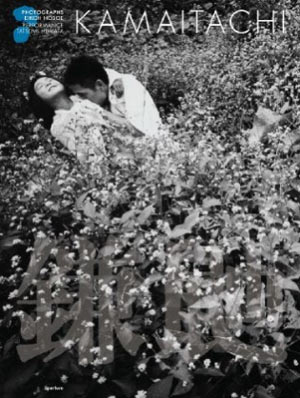Review: Kamaitachi by Eikoh Hosoe

We might be experiencing a bit of a renaissance of Japanese photography books in the West, or rather a naissance - since outside of a small circle of dedicated collectors Japanese photo books are not widely known. Eikoh Hosoe’s Kamaitachi was originally published in 1969, and it is here re-released, in a slightly extended form, by Aperture.
As I already discussed in my review of Japanese Photobooks of the 1960s and 70s, Japanese photography books are not “just” a collection of images - they are to be seen as a whole, with each individual image being not that important. Looking through Kamaitachi provides a welcome opportunity to see this principle in action; and, of course, there is the added thrill of seeing the work by one of Japan’s most important post-war photographers.
Kamaitachi is the result of a longer piece of performance art where the photographer invited Tatsumi Hijikata, a (or maybe the) butoh master: “Hijikata was dissatisfied with the Japanese modern dance scene, feeling that it was merely a copy of the work being done in the West. He wanted to find a form of expression that was purely Japanese, and one that allowed the body to ‘speak’ for itself, thru [sic!] unconscious improvised movement. His first experiments were called Ankoku Butoh, or the Dance of Darkness. This darkness referred to the area of what was unknown to man, either within himself or in his surroundings. His butoh sought to tap the long dormant genetic forces that lay hidden in the shrinking consciousness of modern man.”
Tatsumi Hijikata and Eikoh Hosoe descended upon villages in the countryside, for the dancer to perform and the photographer to record (and partially direct). It is not inconceivable that parts of Kamaitachi might remain hidden for a Westerner unfamiliar with its culture, background, and historical situation. But, of course, what matters is that this work is now accessible so it can add its own voice to a photographic canon that, in the West, is still rather narrow; and while the term butoh might be mostly unfamiliar to a Western audience, its general approach might not be.
This all makes Kamaitachi a very important re-release, which hopefully will expand our thinking of what photography is and what it can do.
Kamaitachi, photography by Eikoh Hosoe, essays by Shuzo Takiguchi and Donald Keene, Aperture, 2009, 112 pages